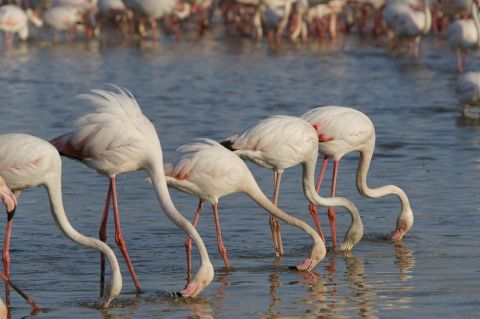Birds in Europe-diversity and conservation
2025-05-19 14:06:10
Europe,
with its diverse landscapes and rich ecosystems, is home to a stunning
array of bird species. From the majestic raptors soaring over mountain
ranges to the colorful songbirds flitting through forests, the
continents avian population paints a vibrant tapestry against its varied
backdrop. In this article, we delve into the captivating world of
European birds, exploring their diversity, ecological significance, and
the conservation efforts aimed at protecting these feathered wonders.

Diversity Across Habitats:
Europes
geographical diversity gives rise to a wide range of habitats, each
supporting its own unique bird communities. From the windswept cliffs of
the Atlantic coast to the tranquil marshes of the Danube Delta, birds
have adapted to thrive in a multitude of environments. Coastal regions
are frequented by seabirds like gulls, terns, and puffins, while
woodlands echo with the melodious songs of thrushes, warblers, and
woodpeckers. Wetlands play host to wading birds such as herons, egrets,
and storks, while alpine meadows are home to iconic species like the
alpine chough and the elusive golden eagle.
Migratory Marvels:
Europes
avian population is further enriched by its role as a crucial stopover
point for migratory birds. Twice a year, millions of birds undertake
epic journeys, traveling thousands of miles between breeding grounds in
the north and wintering grounds in the south. The wetlands of the
Camargue in France, the Strait of Gibraltar in Spain, and the Wadden Sea
in the Netherlands serve as vital staging posts for these migratory
marvels. Species such as the barn swallow, the common swift, and the
osprey undertake remarkable migrations, relying on their innate
navigational skills to traverse continents and oceans.
Threats and Conservation Challenges:
Despite
their remarkable adaptability, European birds face a myriad of threats,
ranging from habitat loss and degradation to climate change and
pollution. Urbanization encroaches upon natural habitats, fragmenting
landscapes and disrupting nesting and foraging grounds. Intensive
agriculture and deforestation further diminish available habitat, while
pollution from pesticides and chemicals contaminates food sources and
waterways. Climate change exacerbates these challenges, altering weather
patterns, disrupting migration routes, and causing shifts in habitat
suitability.
Conservation Efforts:
Recognizing
the urgent need to protect Europes avian biodiversity, conservation
organizations, governments, and grassroots initiatives have mobilized
efforts to safeguard bird populations and their habitats. Key
conservation strategies include the establishment of protected areas
such as national parks, wildlife reserves, and Ramsar wetlands, which
provide sanctuaries for birds to breed, feed, and rest. Habitat
restoration projects aim to rehabilitate degraded ecosystems, while
initiatives to reduce human-wildlife conflicts promote coexistence
between birds and local communities.
Citizen Science and Public Engagement:
Engaging
the public in bird conservation efforts is essential for fostering
awareness, appreciation, and stewardship of Europes avian heritage.
Citizen science initiatives such as birdwatching surveys, nest box
monitoring programs, and bird ringing projects enable individuals of all
ages and backgrounds to contribute valuable data on bird populations
and behavior. Educational outreach programs, bird festivals, and guided
nature walks further inspire curiosity and connection with the natural
world, instilling a sense of responsibility for protecting our feathered
friends.
Looking to the Future:
As
we stand at the crossroads of environmental change, the future of
Europes bird population hangs in the balance. While the challenges ahead
may seem daunting, there is reason for optimism. By working together,
leveraging scientific knowledge, and harnessing the collective power of
communities, we can ensure a brighter future for Europes birds and the
habitats they depend on. Through conservation action, habitat
restoration, and sustainable land management practices, we can preserve
the rich tapestry of avian life that enriches our continent and inspires
awe in all who behold it.
In
the intricate web of life that encompasses Europes ecosystems, birds
play a vital role as indicators of environmental health and guardians of
biodiversity. Their songs herald the changing seasons, their flights
trace the rhythms of migration, and their presence enriches our lives in
countless ways. As stewards of the natural world, it is our
responsibility to protect and preserve Europes avian treasures for
generations to come. By embracing conservation, fostering collaboration,
and nurturing a deep reverence for nature, we can ensure that Europes
skies remain filled with the vibrant hues and melodious choruses of its
beloved birds.










